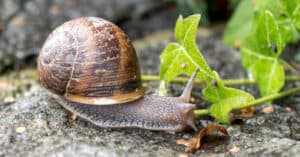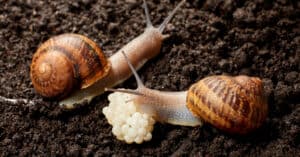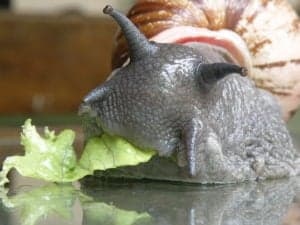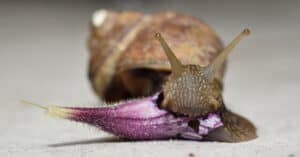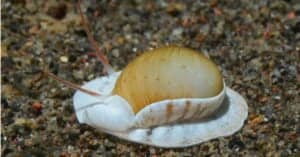Is Snail Racing Real?
@media (min-width: 481px) {
.mobile-top-content {
display: none;
}
}
#mobileTopContentCTACarouselControls { overflow: hidden; text-overflow: ellipsis; white-space: nowrap; }
.mobile-top-content .more { color: #fff; }
.mobile-top-content a { color: #fff; text-decoration: underline; }
.mobile-top-content a:hover { color: #fff; text-decoration: underline; }
@media (max-width: 480px) {
.mobile-top-content {
background-color: #06a10b;
color: #fff;
text-align: center;
/*height: 60px;
padding-top:5px;*/
font-size:80%;
/* display: block; */
margin: 0px -30px;
}
}
Betting has been around pretty much as long as humans have been around. We love to put money on things, hoping that our guess pays off! When it comes to betting, people always seem to be willing to place their money on a race. Horse races, F1 racing, or even dog racing are all rather popular pastimes for people to bet on! One of the less common forms of racing, however, is one that involves an animal that is known for its speed… or rather, its lack thereof. Snails. Is snail racing real? Do people even bet on it? Why do people even care? Let’s learn all about snail racing and just how real it is!
Is snail racing real?

iStock.com/Aleksandr Zyablitskiy
Snail racing may seem like a comical oxymoron, but it is actually a real thing! It’s not likely to end up on ESPN anytime soon, but as it stands, professional and amateur snail racing really does exist. It’s a rather funny idea, but people have been gathering and racing snails for longer than you would think. In fact, there is even a dedicated website that details one of the largest gatherings of snail racers in the world!
Let’s look at how it works. Everywhere globally does it differently, but most organizations have some standardization. Generally, the track is set on a flat surface and is made up of a damp towel or cloth set down on the table. The dampness keeps the snails from drying out as they “race” across the top. The tracks are usually 13-14 inches long, and the snails are identified through numbers painted on their shells.
What kinds of snails are used in snail racing?
There are a lot of different species of snails. When it comes to snail racing, however, there is one that reigns supreme – the brown garden snail, or Cornu aspersum. These snails are native to Europe and have been introduced to many different environments and countries all over the world. Snail racing has its largest following in the Uk, one of the snail’s most common natural habitats. Since the largest competitions exist in the UK and these land snails are common there, they became the standard. While there may be other snail races that utilize different species of snail, it appears that the vast majority of competitions use the garden snail as their ideal species.
Aquatic snails aren’t ideal for snail racing, namely because they live in the water. Still, it’s an interesting proposition to explore just how fast different species of snails can go.
What snail racing competitions exist?
There are a few snail competitions across the world, but most of the large ones happen in the UK. The World Snail Racing Championship happens each year in Congham, Norfolk, and began in the 1960s. It started when Tom Elwes, the founder, saw a snail racing event happen in France. Bringing the sport back, he began the first competitions.
There was also an official snail race instituted in London back in 1999. It was named the Guinness Gastropod Championship. It had its own commentator (a horse racing expert named John McCririck), who wittily began the race by saying, “Ready, Steady, SLOW!”. Since that moment, that has been the official starting language to begin snail races.
Additionally, there is a Grand Championship Snail Race in Cambridgeshire, England, that began in 1992. The village where it’s hosted, Snailwell, uses it as part of its summer fête. Incredibly, they have crowds of up to 400 people each year, and the village is only 200 normally!
What snail is the fastest on record?

Bildagentur Zoonar GmbH/Shutterstock.com
There have been a few records set by the world’s best snails at these various competitions. Let’s go over them.
In 1995, a snail named Archie was competing in the World Snail Racing Championship in Norfolk. Archie set the benchmark time, coming in slow with a completion time of two minutes exactly. The track was 12 inches long, and Archies reward was to become the stud for all the other snails who wanted to utilize his “services.”
The 2008 winner named Heikki Kovalainen completed the race in three minutes and two seconds. The snail was named after the famous F1 racer, whose owners wanted to channel their namesake’s speed and skill!
The 2010 World Championship was won by Sidney the snail was, who was able to finish in three minutes and 41 seconds, still not beating Archie but putting up quite the fight.
The current world champ is a snail named Larry, who is owned by Tara Beasley from Castle Acre. Larry was able to complete the race in two minutes and 47 seconds.
How fast can the average snail go?
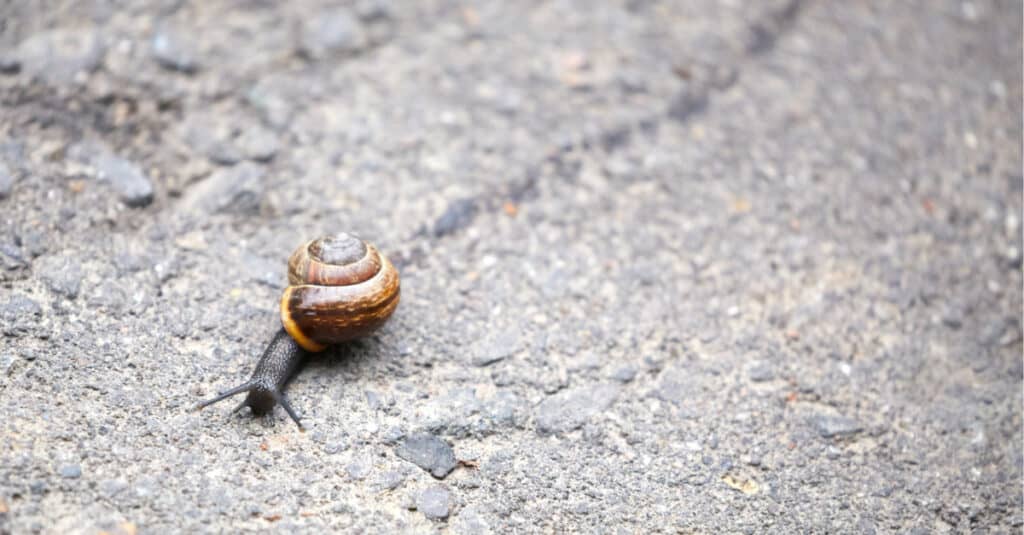
iStock.com/akinshin
Snails aren’t known for their speed, but just how fast (or slow) are they?
Well, the average snail likely isn’t to go that fast. One source claims that a banana slug was able to cover 6.25 inches over the course of 120 minutes, giving a total speed of 0.000023 m/s.
Some sources claim that a garden snail can move at speeds of up to .03 mph (0.013 m/s), but that seems unlikely, especially since that would be many times faster than Archie, the world’s fastest snail, would have gone in his record-setting 0.0028 m/s at his 1995 World Snail Racing competition win.
What is the most money someone has won from snail racing?
For people hoping to get into the lucrative market that is snail racing… it’s probably better to find another hobby. Pretty much anything else in the world has better cash rewards than snail racing offers. Often, the winning snail receives a large engraved cup (filled with lettuce, of course). Additionally, the winning snail gets stud preferences to hopefully pass on the speedy genes.
Overall, it’s a hobby of love that people compete in for pride’s sake… or maybe just boredom’s sake!
More from A-Z Animals
.more-snake-card-image { max-height:140px !important; }
@media (min-width: 481px) {
.mobile-top-content {
display: none;
}
}
#mobileTopContentCTACarouselControls { overflow: hidden; text-overflow: ellipsis; white-space: nowrap; }
.mobile-top-content .more { color: #fff; }
.mobile-top-content a { color: #fff; text-decoration: underline; }
.mobile-top-content a:hover { color: #fff; text-decoration: underline; }
@media (max-width: 480px) {
.mobile-top-content {
background-color: #06a10b;
color: #fff;
text-align: center;
/*height: 60px;
padding-top:5px;*/
font-size:80%;
/* display: block; */
margin: 0px -30px;
}
}
Betting has been around pretty much as long as humans have been around. We love to put money on things, hoping that our guess pays off! When it comes to betting, people always seem to be willing to place their money on a race. Horse races, F1 racing, or even dog racing are all rather popular pastimes for people to bet on! One of the less common forms of racing, however, is one that involves an animal that is known for its speed… or rather, its lack thereof. Snails. Is snail racing real? Do people even bet on it? Why do people even care? Let’s learn all about snail racing and just how real it is!
Is snail racing real?

iStock.com/Aleksandr Zyablitskiy
Snail racing may seem like a comical oxymoron, but it is actually a real thing! It’s not likely to end up on ESPN anytime soon, but as it stands, professional and amateur snail racing really does exist. It’s a rather funny idea, but people have been gathering and racing snails for longer than you would think. In fact, there is even a dedicated website that details one of the largest gatherings of snail racers in the world!
Let’s look at how it works. Everywhere globally does it differently, but most organizations have some standardization. Generally, the track is set on a flat surface and is made up of a damp towel or cloth set down on the table. The dampness keeps the snails from drying out as they “race” across the top. The tracks are usually 13-14 inches long, and the snails are identified through numbers painted on their shells.
What kinds of snails are used in snail racing?
There are a lot of different species of snails. When it comes to snail racing, however, there is one that reigns supreme – the brown garden snail, or Cornu aspersum. These snails are native to Europe and have been introduced to many different environments and countries all over the world. Snail racing has its largest following in the Uk, one of the snail’s most common natural habitats. Since the largest competitions exist in the UK and these land snails are common there, they became the standard. While there may be other snail races that utilize different species of snail, it appears that the vast majority of competitions use the garden snail as their ideal species.
Aquatic snails aren’t ideal for snail racing, namely because they live in the water. Still, it’s an interesting proposition to explore just how fast different species of snails can go.
What snail racing competitions exist?
There are a few snail competitions across the world, but most of the large ones happen in the UK. The World Snail Racing Championship happens each year in Congham, Norfolk, and began in the 1960s. It started when Tom Elwes, the founder, saw a snail racing event happen in France. Bringing the sport back, he began the first competitions.
There was also an official snail race instituted in London back in 1999. It was named the Guinness Gastropod Championship. It had its own commentator (a horse racing expert named John McCririck), who wittily began the race by saying, “Ready, Steady, SLOW!”. Since that moment, that has been the official starting language to begin snail races.
Additionally, there is a Grand Championship Snail Race in Cambridgeshire, England, that began in 1992. The village where it’s hosted, Snailwell, uses it as part of its summer fête. Incredibly, they have crowds of up to 400 people each year, and the village is only 200 normally!
What snail is the fastest on record?

Bildagentur Zoonar GmbH/Shutterstock.com
There have been a few records set by the world’s best snails at these various competitions. Let’s go over them.
In 1995, a snail named Archie was competing in the World Snail Racing Championship in Norfolk. Archie set the benchmark time, coming in slow with a completion time of two minutes exactly. The track was 12 inches long, and Archies reward was to become the stud for all the other snails who wanted to utilize his “services.”
The 2008 winner named Heikki Kovalainen completed the race in three minutes and two seconds. The snail was named after the famous F1 racer, whose owners wanted to channel their namesake’s speed and skill!
The 2010 World Championship was won by Sidney the snail was, who was able to finish in three minutes and 41 seconds, still not beating Archie but putting up quite the fight.
The current world champ is a snail named Larry, who is owned by Tara Beasley from Castle Acre. Larry was able to complete the race in two minutes and 47 seconds.
How fast can the average snail go?

iStock.com/akinshin
Snails aren’t known for their speed, but just how fast (or slow) are they?
Well, the average snail likely isn’t to go that fast. One source claims that a banana slug was able to cover 6.25 inches over the course of 120 minutes, giving a total speed of 0.000023 m/s.
Some sources claim that a garden snail can move at speeds of up to .03 mph (0.013 m/s), but that seems unlikely, especially since that would be many times faster than Archie, the world’s fastest snail, would have gone in his record-setting 0.0028 m/s at his 1995 World Snail Racing competition win.
What is the most money someone has won from snail racing?
For people hoping to get into the lucrative market that is snail racing… it’s probably better to find another hobby. Pretty much anything else in the world has better cash rewards than snail racing offers. Often, the winning snail receives a large engraved cup (filled with lettuce, of course). Additionally, the winning snail gets stud preferences to hopefully pass on the speedy genes.
Overall, it’s a hobby of love that people compete in for pride’s sake… or maybe just boredom’s sake!

